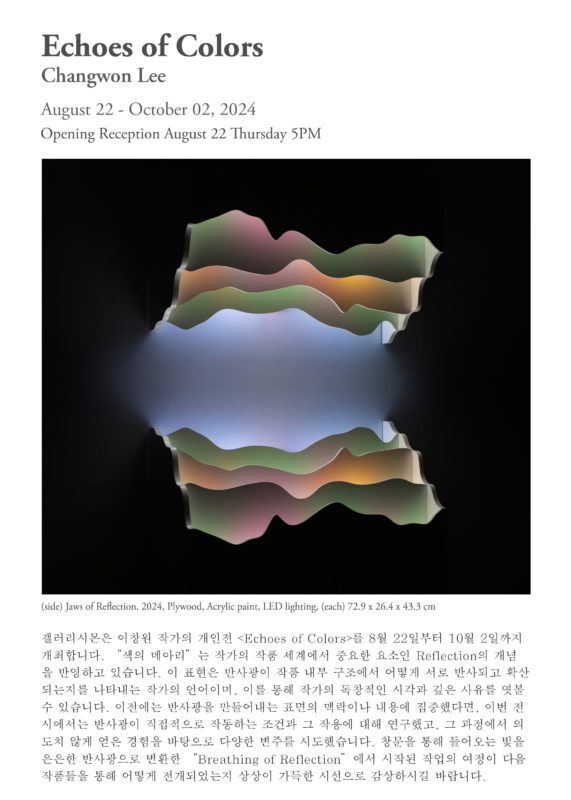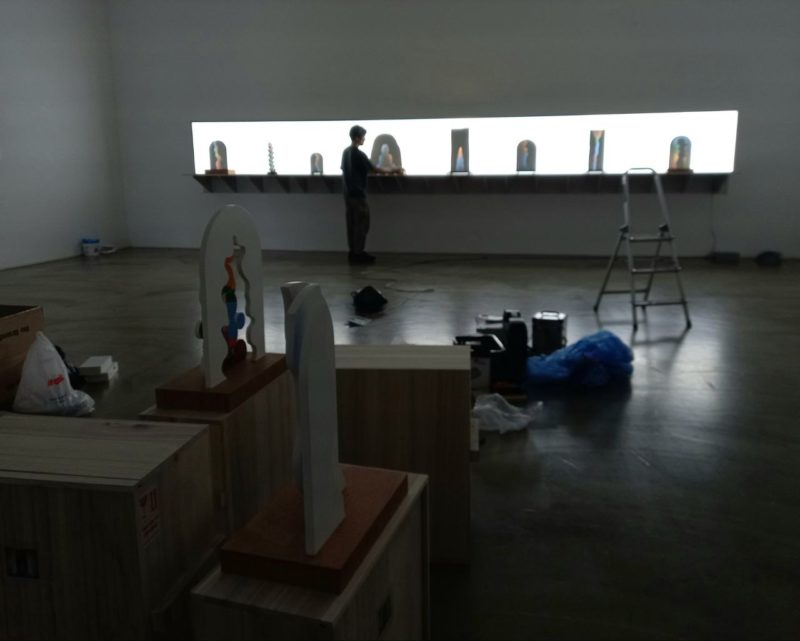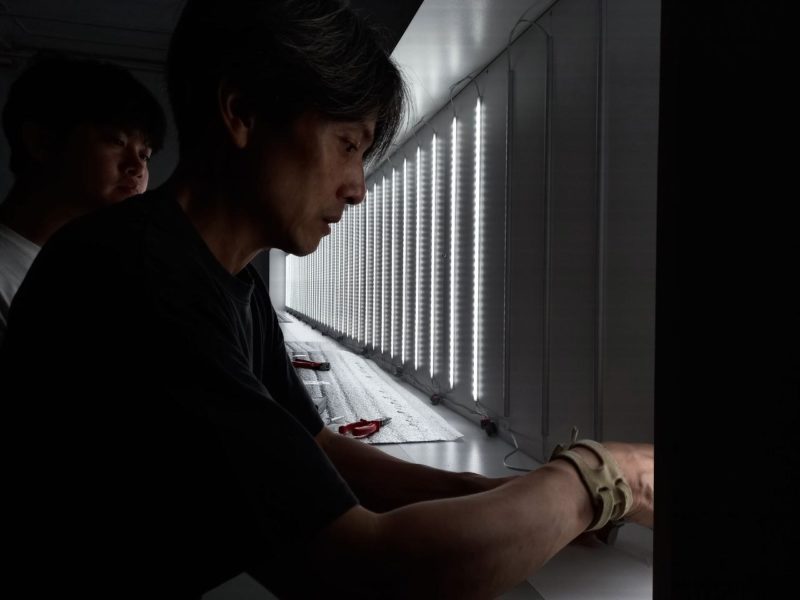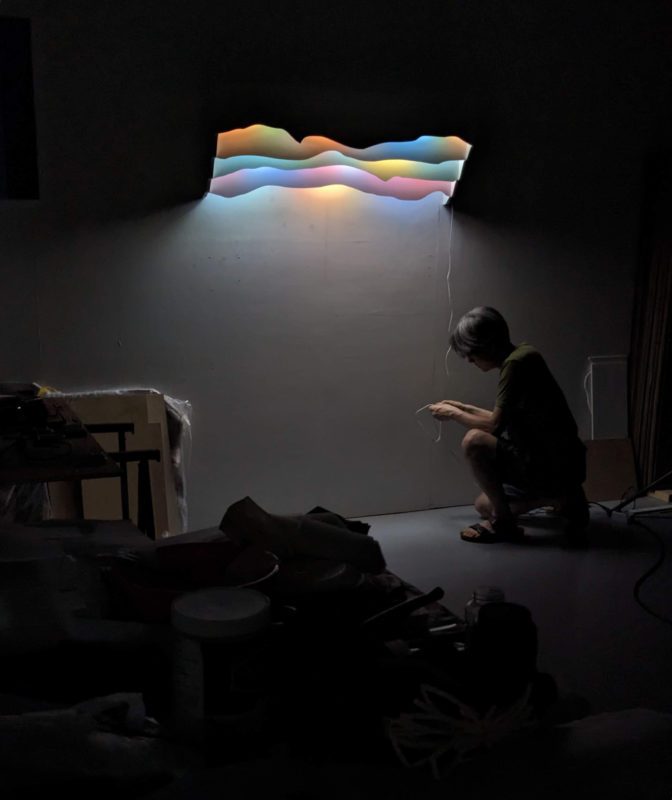
갤러리 시몬에서 개인전을 열게 되었다. 역시 무더위에 전시를 준비하는 것은 힘든 일이지만 전시 기간은 날 좋은 가을이므로 좋은 날씨에 손님들을 맞이하고 만날 상상을 하며 견뎌내도록 한다.


Breathing Reflection 시리즈는 창을 통해 들어오는 빛을 염두에 두고 만든 작품인데 갤러리에서 어떻게 하면 창문의 빛을 통해 들어오는 빛을 연출할까 고민하다가 바리솔 조명과 결합된 선반을 제작하기로 했다. 처음 만들어보는 것이라 시행착오를 많이 겪었고 새로 알게된 것도 많았다.

